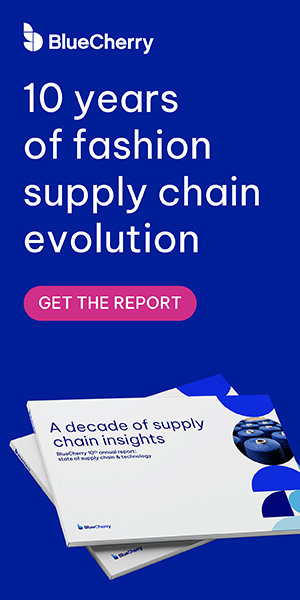From Data to Decisions: AI’s Role in Scalable Fashion Sustainability

Among the countless industries being re-shaped by Artificial Intelligence (AI), the fashion industry is also being heavily influenced by the technology - but its biggest impact may not be in design or trend forecasting. Instead, it may come from making sustainability measurable, scalable, and intelligent.
This is where AI and machine learning (ML) offer game-changing potential - not to replace human judgment, but to amplify ESG intelligence.
From chaos to clarity: the real role of AI in ESG
Contrary to popular belief, AI doesn’t begin with algorithms; it begins with structured, high-quality data. But in ESG, that’s precisely the problem.
According to Bain & Company, most sustainability teams today spend 70–80% of their time collecting and formatting data, from emissions and water use, to social audits and material origins. The rest is spent trying to extract insights from siloed systems.
AI can’t function effectively without breaking that cycle.
So, what’s the opportunity?
Once your ESG data is:
- connected (across PLM, ERP, ESG and supply chain systems);
- normalized (units, formats, source reliability);
- contextual (linked to products, materials, transactions, suppliers, processes, process primary data -- distance, energy, water, etc.); and,
- accessible (via APIs or machine-readable exports)
…then AI can unlock rapid, repeatable insights at scale.
AI becomes the bridge between raw ESG data and automated insight, reducing the burden on ESG teams while increasing accuracy, timeliness, and impact.
AI-driven use cases for fashion ESG
The fashion sector is uniquely complex, often working across multiple tiers, regions, and suppliers. This complexity creates a perfect environment for intelligent automation. Here are five impactful applications already emerging across fashion supply chains:
1. Carbon forecasting
Instead of waiting for carbon footprints post-production, AI can predict emissions intensity during sourcing decisions. Brands can run simulations on raw material choices, production locations, or transport modes, enabling low-carbon decision-making at the planning stage.
Impact: Reduce Scope 3 emissions before they occur. Choose greener suppliers with confidence.
2. Anomaly detection in ESG reporting
Imagine tracking energy, water, or waste data across 200+ suppliers. Manual spot checks don’t scale, but AI models can learn patterns and flag outliers automatically.
For example, if a dyeing facility suddenly reports a 40% drop in water use, the system can raise an alert for verification, catching errors, fraud, or real savings in real time.
Impact: Save time, reduce risk, and improve audit-readiness.
3. AI-powered supplier risk scoring
Beyond audit pass/fail rates, AI can calculate a dynamic sustainability risk score based on:
- Past certifications
- Emissions trends
- Factory conditions
- Regulatory risk zones
- Delivery performance
- Insights from publicly available sources - such as customs data, newspaper reports, blogs, or social media - that highlight discrepancies not included in supplier certifications; for example, local reports of contaminated groundwater that warrant further investigation.
Impact: Focus remediation on highest-risk partners. Inform sourcing and onboarding. Avoid reputational damage that is otherwise out of the brand’s control.
4. Circularity planning and waste optimization
With sufficient data on returns, resale readiness, or post-consumer take-back, AI can simulate circular business models; identifying where reuse or recycling programs are most viable.
It can also model reverse logistics (i.e., managing product returns or reuse routes), estimate carbon costs, or suggest partnerships based on material compatibility.
Impact: Boost ROI on circular programs. Reduce waste. Improve Extended Producer Responsibility (EPR) compliance.
5. Green claims and DPP validation
EU legislation such as the Green Claims Directive (to combat “greenwashing” by setting strict requirements for companies’ "green" claims) and Digital Product Passport (to enhance product transparency, sustainability, and traceability), mean that evidence matters. AI can match marketing claims to their underlying data and flag gaps or inconsistencies.
If a garment claims “50% recycled polyester,” but supplier declarations only cover 30%, AI can raise this before a product goes to market. Impact: Avoid risk of reputational damage. Build consumer trust through verified transparency.
Why It matters now: the clock is ticking!
By 2026:
- The EU’s DPP compliance becomes mandatory for many fashion categories; and
- The EU’s Corporate Sustainability Reporting Directive (CSRD) rules expand to 50,000+ companies; and
- France, Germany, and others are tightening Extended Producer Responsibility (EPR) and human rights due diligence; plus
- Stateside... The Security and Exchange Commission’s (SEC) climate disclosure rules are phased in for large US-listed firms;
- Global brands needing to navigate for complexity will want to adapt to the highest standards based on the markets in which they operate or have ambition to reach.
Accordingly, investors are pricing ESG risk while consumers are rewarding brands offering transparency that reflects brand purpose integrity.
The takeaway? Manual ESG won’t scale.
Companies that treat ESG as a data challenge - and enable that data to power AI - will move faster, stay compliant, and outpace the competition.
The data foundation: BlueCherry ESG
AI requires structured, contextual data, and that’s exactly what BlueCherry ESG delivers. Our platform transforms ESG complexity into accessible intelligence by enabling:
- PO-linked traceability from raw materials to finished goods
- Modular data capture via supplier forms, file uploads, API integration, and AI-driven OCR (optical character recognition) scanning of documents
- Emissions, water, waste, and packaging modules ready for analytics
- Integration with BlueCherry Product Lifecycle Management (PLM), Enterprise Resource Planning (ERP), Manufacturing Execution Systems (MES), as well as external platforms
Rather than relying on retrospective reports, BlueCherry ESG creates a living data model, ready to feed AI engines, sustainability dashboards, and compliance outputs like DPP and CSRD (Corporate Sustainability Reporting Directive).
With structured data in place, brands can:
- Build machine learning models for emissions reduction
- Automate supplier performance tracking
- Embed sustainability into design, sourcing, and logistics workflows
In other words, make ESG operational.
From reporting to resilience
AI doesn’t just improve ESG reporting; it can fundamentally shift how fashion businesses operate.
In a world where regulatory scrutiny, investor diligence, and consumer trust are converging, brands that embed ESG into core operations will lead, not just in compliance, but in agility, cost-efficiency, and innovation.
By transforming disconnected, unstructured ESG data into live intelligence, brands gain:
- Faster compliance responses
- Predictive alerts to avoid risks
- Scenario planning for sourcing, transport, or materials
- Embedded sustainability in every decision
This isn’t science fiction, it’s already happening. And it’s becoming a competitive necessity.
Final thought
AI is only as powerful as the data it’s built on. But with the right foundations, it becomes a catalyst for real, measurable sustainability impact.
At BlueCherry ESG, we believe sustainability must be embedded, not bolted on, and that starts with intelligent data integration.
If your brand is ready to move beyond spreadsheets and dashboards - toward AI-enabled, real-time ESG intelligence - BlueCherry ESG is ready to support your journey
Reach out to us today to learn how BlueCherry ESG can make your data AI-ready, so you can move from reporting to real change.

